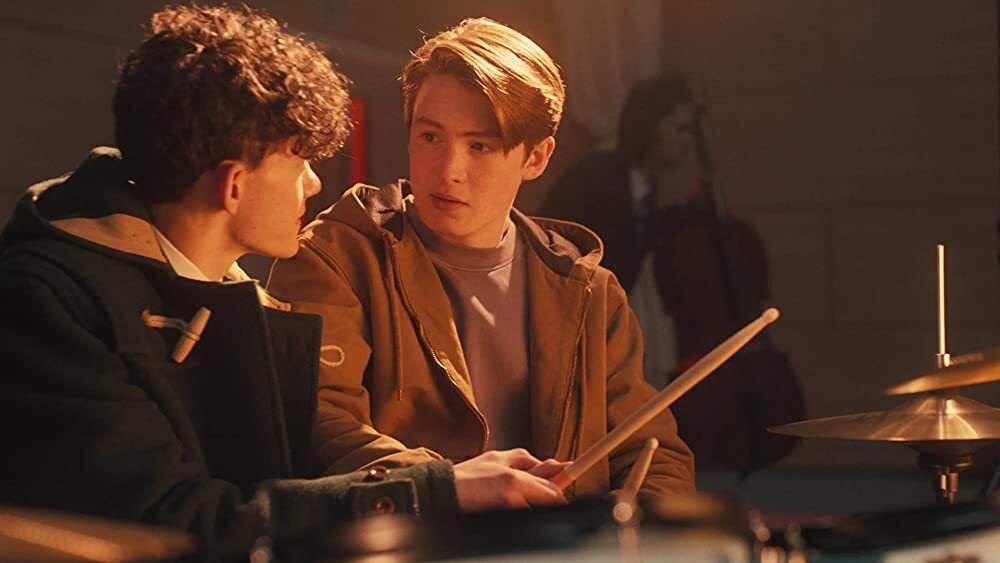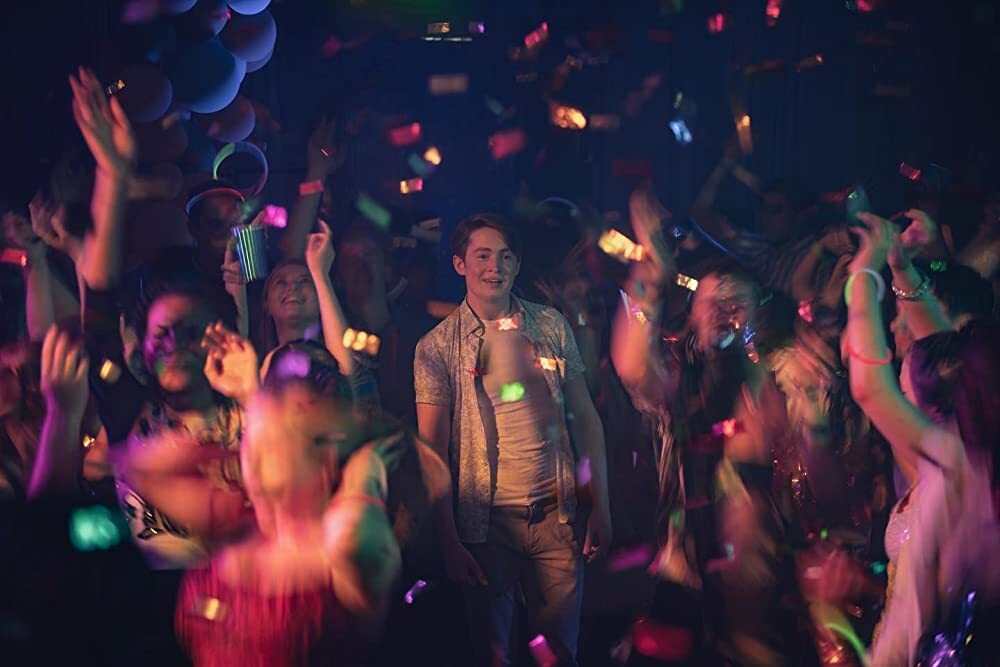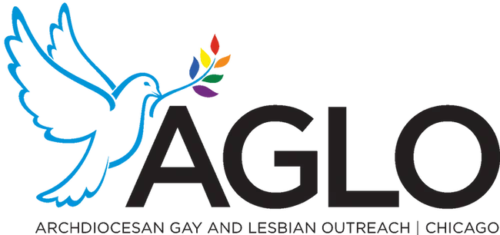The Netflix series triumphantly celebrates what it’s like to love—and be loved—as a queer teen.
It is rare that a show grabs my attention, and even rarer when it so consumes me that I binge-watch it. Netflix’s “Heartstopper,” whose first season dropped on April 22, is a gem that has managed just that—and it’s changed the way I look at myself as a gay man.
The genius of the series lies with Alice Oseman, who wrote and drew the webcomic of the same name (a print edition of which has been published in U.S. by Scholastic) and wrote the screenplay for the live-action adaptation. Her words are given life by a host of talented young actors who are as representative of the LGBTQ community as their characters. Under the direction of Euros Lyn, the result is a masterpiece of TV storytelling that conveys the simultaneous simplicity and complexity of queer adolescent love with unmatched pathos.
“Heartstopper” isn’t just a good show; it’s a life-affirming story.
On paper, its plot is straightforward: Charlie Spring (Joe Locke) is only barely comfortable in his own skin as he attends an all-boys school in England; his doe eyes, breathy voice and top-heavy haircut seem like adaptations to a life spent looking down at the floor and keeping quiet. He hangs out with his fellow misfit friends, including Tao (William Gao), who is straight; and Elle (Yasmin Finney), who has recently transferred to an all-girls school after transitioning. When the show starts, Charlie is in a secret relationship with another boy at his school, Ben, who uses Charlie for his own gratification, rather than viewing him with genuine affection.
Then, suddenly, Charlie gets assigned a seat next to Nick Nelson (Kit Connor)—the energetic, charming and (seemingly) straight captain of the rugby team—in homeroom. While many of the other rugby boys bullied Charlie the year before, when he was outed as gay, Nick is affable from the get-go, much to Charlie’s surprise. As the winter months give way to springtime, Charlie and Nick become close friends and before long fall for each other.
“Heartstopper” is a masterpiece of TV storytelling that conveys the simultaneous simplicity and complexity of queer adolescent love with unmatched pathos.
Their romance, despite making Nick very happy, introduces him to the uncomfortable process of reckoning with his sexual orientation; he is not out to his mother, and he certainly doesn’t feel ready to come out to the rugby boys, who lob homophobic jeers at Charlie under the guise of playful banter. On top of this, Tao—initially wary that Charlie will get hurt by pursuing Nick—grows resentful of how the pair is seemingly breaking apart their tightknit group of friends. Meanwhile, Elle becomes friends with Tara (Corinna Brown) and Darcy (Kizzy Edgell)—two girls who have been best friends since middle school and who are now dating.
The plot is admittedly formulaic, and few developments in the show are unpredictable. But a synopsis doesn’t begin to do this show justice nor to explain how much of a transformative impact it’s had on the way I look at my own sexuality. What is it about “Heartstopper” that makes it stand out so magnificently from other TV shows and movies?
Authentically queer
One of the main strengths of “Heartstopper” is how realistically it presents its characters’ experiences as queer teens.
“Heartstopper” doesn’t fall into the trap of having 15-year-old characters portrayed by 20-something actors with modeling careers on the side. Instead, the show is smart enough to realize that most teenagers don’t have six-pack abs, perfectly clear skin or uncracked voices. This isn’t some radical statement of body positivity—it’s the simple truth. Instead, the show recognizes that high school is experienced as Axe-scented P.E. classes and awkward trips to the movies with friend groups.
The teenagers in the series are played by teenagers in real life, lending the characters’ portrayals a subtle reality for which no amount of direction or acting ability could ever compensate. High school is rarely an easy experience for anyone, let alone LGBTQ people, but “Heartstopper” manages to capture the hope-filled exhilaration of adolescence without dismissing how socially tumultuous those years can feel. As Joe Locke (who is 18) said in an interview with GQ, “We’re all still teenagers, so we’re acting these feelings that feel really real and recent for all of us.”
Beyond the casting decisions, Oseman’s writing and Lyn’s direction infuse the characters’ behaviors with an uncanny authenticity. Even very small details—the tentative-then-confident holding of hands, a particularly tender hug—gave me butterflies. And as Charlie self-deprecatingly apologizes for something he’s not responsible for, or when Nick reluctantly agrees to go out with a girl he wasn’t interested in only to avert rumors of his feelings for Charlie, it feels viscerally life-like.
Even the Instagram DMs the characters send one another seem like they could be real. Towards the beginning of their friendship, Charlie and Nick draft messages to each other gushing their true feelings for each other—only to hover their finger over the backspace button and type up something innocuous and less vulnerable. Charlie’s bright-eyed expression as he sees Nick typing a response (and vice versa) is as effective at depicting life as a teenager in 2022 as any line of dialogue.
One of the main strengths of “Heartstopper” is how realistically it presents its characters’ lived experience as queer teens.
Over the last decade, filmmakers and dramaturgs have been unable to resist fetishizing technology in the vain hope that tacking text messages and hashtags onto a plot is enough to make an otherwise outlandish story credible. (I am looking at you, “Dear Evan Hansen.”) But with “Heartstopper,” we see at last an accurate representation of the opportunities, no less than the pitfalls, of what it’s like to cultivate relationships online as a Gen Zer.
Notably, “Heartstopper” presents sexuality with grace and discretion—not prudishly, but genuinely. Sexuality is, without a doubt, a crucial, beautiful and important part of adolescence. In not showing sex scenes, the show isn’t being prudish. We are more than just our bodies or the absence of somebody else’s body; being an LGBTQ person is about more than whom we choose to have sex with. By resting content with stolen kisses and allusions to make-out sessions, “Heartstopper” also reflects the reality of being a queer teen—especially for those in a situation similar to Nick’s, for whom a non-straight sexual encounter is socially (let alone logistically) impossible.
LGBTQ representation, on-camera and off
Much of the authenticity of “Heartstopper” derives from the fact that its creative team extensively sought input from queer individuals throughout the creative process. Moreover, LGBTQ-identifying people were hired whenever possible for off-camera positions, including camera operators, costume designers and editors.
In a behind-the-scenes interview, Lyn spoke about how important it was for him to involve queer people at all levels of the production, as it allowed them to “bring their experiences and identify the bits of the story that can only be from an LGBTQ perspective.” The result is a television show that captures the nuances of queer teen love accurately and lovingly; and on a broader level, its success is a testament to the importance of including previously marginalized groups in the creative process.
Onscreen, “Heartstopper” stands out for the extent to which it represents each letter of “LGBTQ.” In addition to a romance between two cisgendered boys, Elle’s friendship with Tara and Darcy underscores just how similar the experiences of trans and lesbian women are; and although the inevitable differences are implied, Elle’s womanhood is never qualified or diminished.
“Heartstopper” presents sexuality with grace and discretion—not prudishly, but genuinely.
And, it turns out that Nick isn’t gay: He’s bi. “I still like girls,” he cautiously reveals to his mother (played by a lovingly maternal Olivia Colman) in one of the show’s most poignant scenes. “But, um…I like boys too.”
Nick’s confusion as he reflects on his sexuality—how can he have liked kissing a girl at 13 when he’s now in love with Charlie?—underscores how, for gay and lesbian people, being primarily attracted to only one gender provides at least some baseline level of clarity (even if our lives aren’t much easier for it in the end).
In less able hands, including characters of many different sexual and gender identities could easily have ended up coming across as tokenism. But the diverse stories of “Heartstopper” have provided me with a basic, yet necessary, education—one that hopefully will serve younger viewers as well.
One friend of mine, who is bi, told me a few months ago that she didn’t feel represented in coverage of LGBTQ issues because of the tendency to focus on people who are attracted to one gender. Watching Nick’s struggle has led me to question how much of my understanding (if it can be called that) of bisexuality has been colored by popular misconceptions and sloppy assumptions. And witnessing Elle’s relationships with her friends, I realize how much my pondering and theorizing about the science and credibility of transgender people’s experiences has caused me to neglect the concrete imperative to love them and be the ally they deserve.

Some people might argue that a rosy-colored Bildungsroman portraying queer teens living harmoniously in their all-boys and all-girls schools is misleading, maybe even disingenuous. After all, it’s no secret that homophobia and transphobia exist in the world, often in forms far worse than the taunts that Charlie, Nick, Elle, Tara, and Darcy are assailed with.
Normally, I’d be inclined to agree. But “Heartstopper,” by balancing sympathy with realism, has disarmed the cynic in me. If it can get the little details right at the human level, what’s to stop us from taking its word that life as a whole can be better, too? Even in a time of increased persecution of LGBTQ people and war, “Heartstopper” gives me hope that a better world is possible—one where love in all its forms can overcome barriers and soften unsuspecting hearts.
Finding my story in Charlie and Nick
I realized that I was gay five or six years ago. And I don’t think it’s a coincidence that I first came out to my dad after one Sunday Mass as we sat in the parking lot. While I’m grateful that my parents continued to love me without reserve, it was difficult to have my coming out met with disappointment and even skepticism. In the months and years afterwards, the topic never came up at home, unless it was absolutely unavoidable.
I came out to some additional friends and family members the summer before I started college. About a year later, in my sophomore year of college, I started being more open about my gayness—but really, that just meant I wouldn’t deny it anymore if someone asked about it; I still wasn’t eager to share the news that I liked guys. In 2019, when I lived in Boston, I went to my first Pride parade, but I can’t say I felt genuinely proud of myself. Even in the year since I graduated from college, I’ve more or less been stuck in this holding pattern of lukewarm acceptance.
I wasn’t open about my sexuality for so many years because I didn’t feel ready and because my circumstances made it seem unthinkable. While I enjoyed many parts of high school, I still wish that I could have a redo, one in which I don’t hide away from my own shadow. I’m sad that I can never get that time back.
Considering the slight melancholy that watching “Heartstopper” made me feel (despite my happiness for the characters), why couldn’t I take my eyes away? The answer, I’ve come to realize, is that for the first time in my life, I felt seen for all of who I am. I’m crying as I write this, and I can tell the tears are coming from God. I see myself in Charlie’s social awkwardness, his tendency to talk deprecatingly about himself, his confusion at having one foot in the world of the “cool kids” even while remaining friends with people on the social peripheries of the high-school landscape. And I see myself in Nick as he presents a straight-acting exterior that belies his deepest, most human yearnings.
I wasn’t open about my sexuality for so many years because I didn’t feel ready and because my circumstances made it seem unthinkable.
I also understand exactly how Charlie feels as the rugby lads hurl insults at him. Although I was fortunate never to face this kind of explicit harassment from anyone at school, more subtle forms of stigma surfaced in my Catholic high school’s religion curriculum, in online Catholic forums, and even from some family members’ and friends’ off-hand comments. I count myself lucky that I didn’t have the f-slur spit at me the way Charlie does; nonetheless, phrases like “intrinsically disordered,” whose venom acts over the course of long periods of time, latched themselves onto my mind like spiritual parasites.
Still, Charlie’s and Nick’s story beckons us to gaze with hope towards a brighter future in which we stand with new-found confidence in who we are. “You’re my boyfriend! I’m your boyfriend!” Nick triumphantly shouts in the season’s final episode, carrying Charlie in his arms as he wades into the sea. I want to tell the world that I’m gay with just as much resolve. I’m not going to put any pressure on myself, but I think I want to come out, again.
Like the characters in the show, I continue to wrestle with my identity; I doubt that will change any time soon. Even so, “Heartstopper” presents this struggle not as something to be dreaded but as a personal metamorphosis that will, one way or another, culminate in joy.
“Heartstopper” is transformative because it depicts teen love, not teen lust. Its plot is not about getting the boy, but about loving and being loved. When Nick apologizes out in the rain for inadvertently hurting Charlie’s feelings, or when Charlie reassures Nick that he should feel no pressure to come out, the show demonstrates that love is found in actions, not in mere words or sentiments.
I’ve often heard God described as love, or some variation on that. And the New Testament says this explicitly, in the First Letter of John. This concept of God, of Jesus, as embodied love (cf. 1 Jn 4:8) always sounded abstract, the result of philosophical deduction more than lived experience. But, as crazy as it sounds, “Heartstopper” made me feel what it was like to be swaddled in the fabric of love and to see God’s love in everyone else, whether they be lovers, friends, or parents.
Maybe the creators, cast and crew of “Heartstopper” had no idea that their creation would cause anyone to experience the sublimity of divine love. But I hope that they know now that within the space of a few days, “Heartstopper” changed the trajectory of my life for the better, putting me on the path to loving myself for who I am.
More than anything, “Heartstopper” is a celebration. It can be intimidating to join in the festivities at first, but once you get in and meet the people there, there’s no reason not to be joyful: Joyful at last in your own skin, in giddy, incredulous love for the first time again.
This must be what the heavenly dance is like: ecstatic, on the edge of summer, totally in love.



